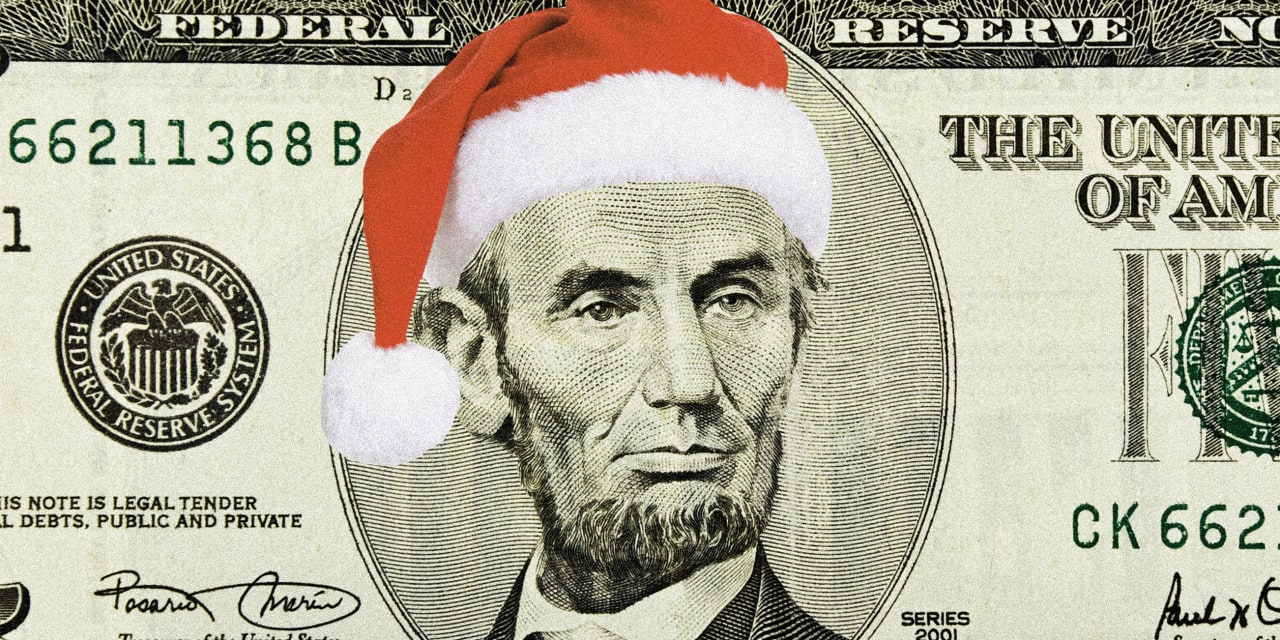On Dec. 23, 1823, an anonymous poem about a “jolly old elf” with a “sleigh full of toys” was published in the Troy, N.Y., Sentinel. Christmas has never been the same since.
“A Visit From St. Nicholas,” commonly known as “The Night Before Christmas” and later attributed to Clement Clarke Moore, distilled Christian and pagan traditions down into a new, modern holiday. Its embodiment was Santa Claus. Its chief beneficiary, besides children, was American business.
Today, as we near the poem’s bicentennial, the holiday season accounts for nearly a fifth of U.S. annual retail sales, and more for sellers of clothes, toys and other prime gift items. The end-of-year trade is crucial to industries like airlines, hotels, manufacturing and shipping, as well as to thousands of seasonal workers. The U.S. economy is centered on the holidays.
It wasn’t always that way. The Pilgrims didn’t observe Christmas. Like the Puritans, they objected to its biblically unsupported placement on Dec. 25, as well as its link to rowdy pre-Christian festivals that celebrated the winter solstice and harvest’s end.
“[T]he feast of Christ’s nativity is spent in reveling, dicing, carding, masking, and in all licentious liberty,” Puritan minister Cotton Mather thundered to his New England flock in 1712.
Christmas survived the Puritans’ attempts to ban it, but it changed. As reflected in Moore’s poem, and immortalized 20 years later in Dickens’ A Christmas Carol, Christmas became a family affair focused on children and gift-giving.
It also turned every parent into Santa Claus, and American industry stepped in as his workshop.
“Christmas shopping is in full swing in New York,” according to a letter in the Huntington, Ind., Democrat on Dec. 22, 1887. The writer describes seeing “mechanical toys, children’s watches and every conceivable and inconceivable device for luring the unwary dollar from the pocketbook of the searcher after Christmas gifts.”
By 1926, the holiday shopping season was well-entrenched.
“The importance of December business may be seen from the fact that 25% of the year’s profits are in that month,” Barron’s wrote of big-city department stores like New York’s R.H. Macy & Co.and Marshall Field of Chicago. They reported record sales, as did mail-order businesses like
Sears,
Roebuck, which brought city goods to the rest of the country, the
Amazon
of its day.
1940 brought several modern developments, including efforts to replace the natural evergreen Christmas tree “with small, arc-welded, fabricated metal trees,” Barron’s reported.
And joining the other stuffed animals were a “mirthful” mouse and duck from
Walt Disney,
an early example of the now-ubiquitous movie tie-in.
Then there was the “Do Your Christmas Shopping Early” campaign launched by retailers, who actually convinced President Franklin D. Roosevelt in 1939 to move Thanksgiving up a week to extend the buying season. Derided as “Christmas creep,” it was just the beginning; holiday advertising this year started in September, McKinsey reports.
When “Mr. and Mrs. America” weren’t shopping, they were busy with another expensive holiday tradition, sending out Christmas cards—3.5 billion of them, Barron’s reported on Nov. 24, 1952.
Hallmark, the industry leader then and now, has since parlayed its holiday connection into a cable station that specializes in movies like “Christmas With a Kiss.”
Children growing up in the 1950s and ‘60s could be excused for thinking Santa worked for
Mattel,
which captured nearly 10% of the toy market with blockbusters like Barbie and Hot Wheels. The key was reaching kids where they lived: in front of the TV.
To spark holiday sales for its “burp gun” in 1955, Mattel paid $500,000 to sponsor the new Mickey Mouse Club show. It was a “hair-raising gamble,” The Wall Street Journal reported, but it worked. Mattel sold a million burp guns that Christmas for $4 each.
By 1964, Mattel’s ad budget was up to $9 million; in 2023, the company spent $150 million in marketing the new “Barbie” movie alone, per Variety.
A new holiday entered the calendar in the 1980s: Black Friday. The day after Thanksgiving had long marked the start of the shopping season, but Black Friday became an event, with massive sales that had crowds lining up in the middle of the night. It could get ugly.
A stampede of Black Friday shoppers in 2008 broke down the store doors of a Valley Stream, N.Y.,
Walmart,
trampling and killing an employee. “It was chaos,” a witness told Newsday.
Such incidents add fuel to modern critics of Christmas. Almost two-thirds of Americans think the holiday has become too commercialized. Some work to Keep Christ in Christmas.
Still, Mr. and Ms. America keep spending. Holiday sales have increased in 19 of the past 20 years (2008 is the exception) and are forecast to rise 3% to 4% this year, to a record around $960 billion, according to the National Retail Federation. That’s out of annual retail sales of just over $5 trillion. The average American will spend $875 over the holidays, a $42 increase over 2022.
And it’s a nationwide phenomenon: a full 92% of adults say they plan to celebrate events such as Christmas, Hanukkah or Kwanzaa this year.
Yes, Virginia, there is a Santa Claus, millions of them, in fact. They exist as certainly as love and generosity and devotion exist, and as long as the credit cards hold out.
Write to [email protected]
Read the full article here




